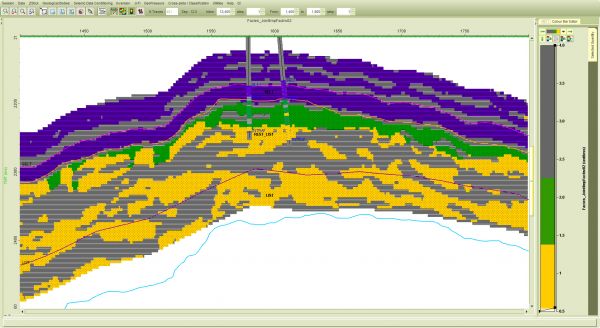Ji-Fi
Ji-Fi, a tool for challenging times
Operators around the globe are shifting their focus from exploration to the most efficient extraction of petroleum from existing assets, at the lowest possible capital costs. In such a context, Ikon Science’s state-of-the-art Joint Impedance and Facies Inversion (Ji-Fi) is the best tool to obtain a reliable reservoir description that highlights areas with the best reservoir properties, detects bypassed reserves or identifies additional satellite compartments. This information helps prioritise development, stimulation or step-out drilling, offering the best potential to boost the bottom line.
Finally, full 3D geology between existing wells
Ever since 3D seismic was introduced in the late 1970s, geoscientists set the goal of creating, from seismic and well control, reservoir models that reliably describe the spatial distribution of the various formations, and the nature of the rocks and fluids within each formation, especially to identify economic reservoir units.
To realise this aim, the new technology of seismic inversion evolved rapidly with the availability of increasing computer power and advances in quantitative interpretation theory. But, despite progress such as the emergence in the 1990s of simultaneous inversion and applied geostatistical inversion methods, results were mostly uncertain and inconclusive, and didn’t enable the creation of reliable reservoir models to the extent foreseen. Enter Ikon Science’s Ji-Fi technology that, finally, delivers on the stated objective.
Rock physics relationships - the key to the seismic inverse challenge
Starting with the company’s inception in 2001, Ikon Science established a strong technology foundation centered on applied rock physics, seismic forward modelling and science-rich prediction tools for rocks and fluids, pore pressure and petroleum geomechanics.
To overcome the inadequacies of existing methods, we took a fresh look at the seismic inverse problem, and realised that rock physics relationships, typically different for the various rock-types or facies encountered, were not used adequately (or at all). By adopting a more integrated and geological-centric approach, we were able to fully integrate prior regional and local geological models and analogues in the inversion of pre-stack seismic data. The target was to deliver a higher-resolution, truly quantitative prediction of rock / fluid type and properties, and in the process deliver a step change in value. This project was named Ji-Fi.
Ji-Fi, the RokDoc module
Ji-Fi is a software system designed to extract geological facies and petrophysical properties from the complex seismic signal and deliver directly a 3D description of the spatial distribution of facies and properties within a reservoir. By integrating all available team data, Ji-Fi bridges the gap between geology and geophysics, notably by its abili














